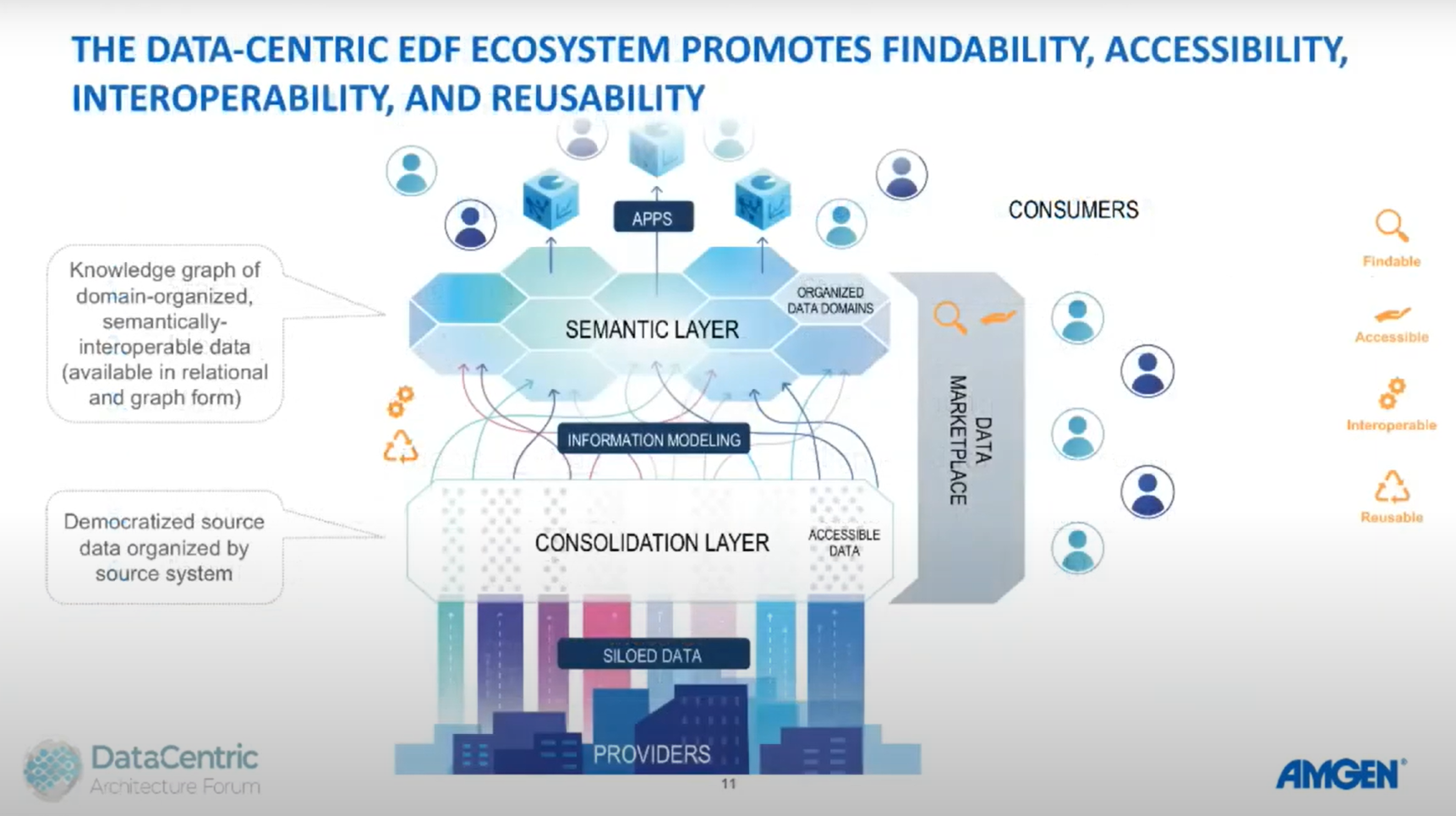Amgen is a large biotechnology company committed to unlocking the potential of biology for patients suffering from serious illnesses by discovering, developing, manufacturing, and delivering innovative human therapeutics. Amgen, CEO Bob Bradway focuses on innovation to set the cultural direction.
Amgen’s goal is to provide life-changing value to patients with expediency. Democratized access to enterprise data speeds the process from drug discovery to drug delivery. One element Amgen’s strategic data leadership agreed upon is that a common language expedites product development by removing ambiguities that slow business processes.
Data capture comes from a multitude of information systems, each using their own data model and unique vocabularies. Different systems use different terminology to refer to the same concept. An organization steep in data silos no longer works. The challenge is to provide a common intuitive model for all systems and people to use. Once such a model is in place, it is no longer laborious and expensive for enterprise consumers to benefit from the data. A decision to establish a semantic layer for building an Enterprise Data Fabric emerged.
Amgen developed a vision of a Data-Centric Architecture (DCA) that transforms data from being system-specific to being universally available. Data is organized and unambiguously represented in data domains within a Semantic layer.
We used the principles of Semantic Knowledge Representation to model a range of business segments for the Semantic Layer:
- Discovery & Development (R&D)
- Small Molecule Assays
- Biologics Production
- Animal Studies (In Vivo and In Vitro)
- Research Taxonomies & External Ontologies
- Materials & Sourcing
- Finance
- Shipping and Logistics
Using FAIR principles as a fundamental guideline, we authored data domain models for Amgen’s Semantic Layer using formal ontological language (Ontology Web Language). We loaded data into knowledge graphs which are governed by those ontologies. We wrote queries (SPARQL) that traverse the knowledge graph to answer the questions of interest (competency questions). An agile extensible and interoperable model coupled with a performant graph will allow lab research scientists and data scientists to speak the same language without disrupting how they work currently. Speed to market by enriching knowledge sharing, speeds innovation.
One of the results is that our work is helping transition Amgen from being dependent on human-only-readable scientific process documentation to human and machine-readable format, opening wider possibilities for advanced analytics.
Adoption of semantic capabilities turns the corner in advancing medicines to deliver therapies faster. In association with Pistoia Alliance, Semantic Arts actively bridges IDMP-O standards for Amgen’s model design incorporation. Amgen management expects that digitization of the drug submission process will shave months off drug approval, accelerating revenue.
For greater insights on Amgen’s information strategy and road map for incorporating a semantic layer refer to Dan Gschwend’s YouTube video from a prior DCA Symposium event.


